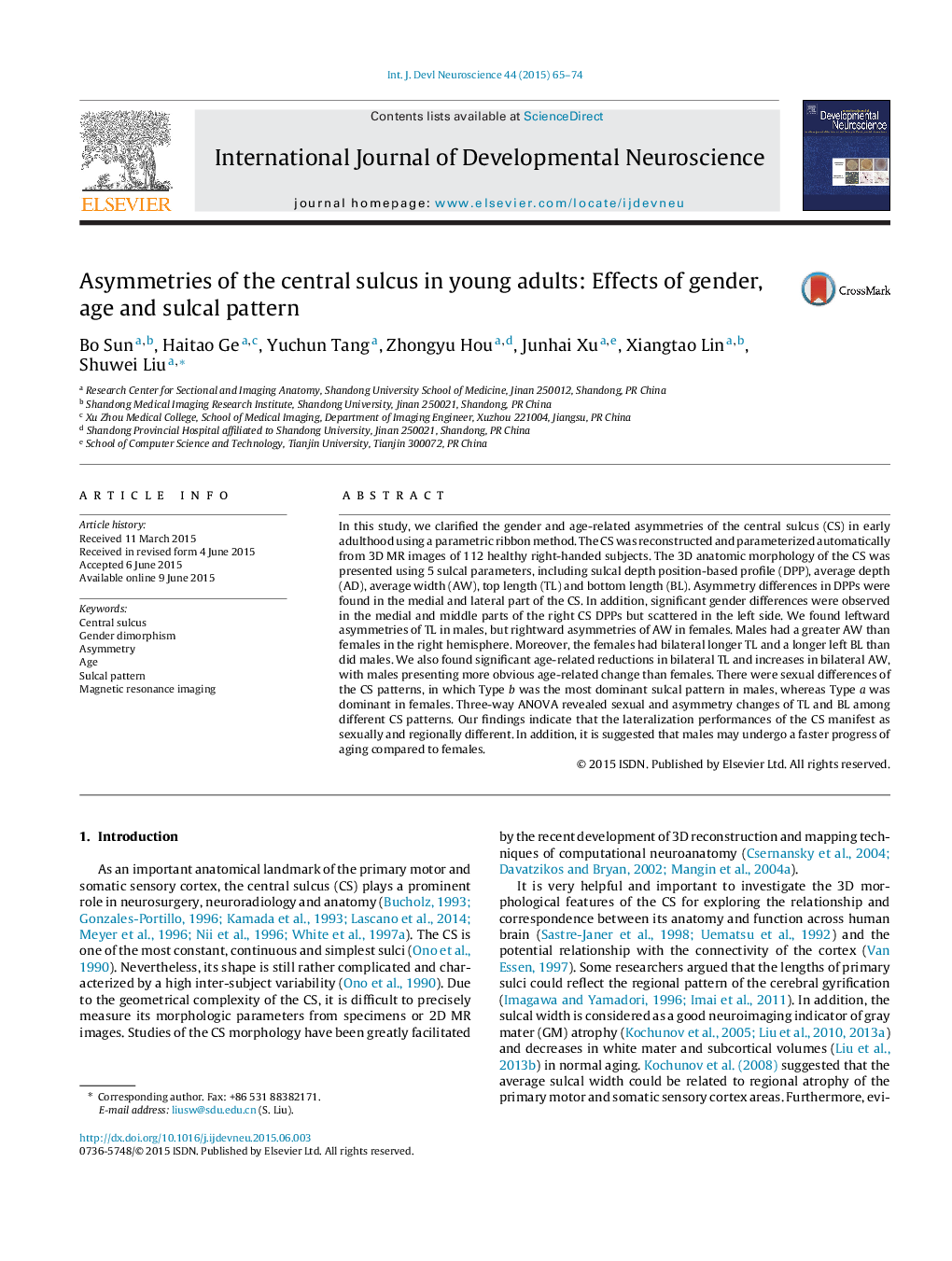| Article ID | Journal | Published Year | Pages | File Type |
|---|---|---|---|---|
| 2785848 | International Journal of Developmental Neuroscience | 2015 | 10 Pages |
Abstract
In this study, we clarified the gender and age-related asymmetries of the central sulcus (CS) in early adulthood using a parametric ribbon method. The CS was reconstructed and parameterized automatically from 3D MR images of 112 healthy right-handed subjects. The 3D anatomic morphology of the CS was presented using 5 sulcal parameters, including sulcal depth position-based profile (DPP), average depth (AD), average width (AW), top length (TL) and bottom length (BL). Asymmetry differences in DPPs were found in the medial and lateral part of the CS. In addition, significant gender differences were observed in the medial and middle parts of the right CS DPPs but scattered in the left side. We found leftward asymmetries of TL in males, but rightward asymmetries of AW in females. Males had a greater AW than females in the right hemisphere. Moreover, the females had bilateral longer TL and a longer left BL than did males. We also found significant age-related reductions in bilateral TL and increases in bilateral AW, with males presenting more obvious age-related change than females. There were sexual differences of the CS patterns, in which Type b was the most dominant sulcal pattern in males, whereas Type a was dominant in females. Three-way ANOVA revealed sexual and asymmetry changes of TL and BL among different CS patterns. Our findings indicate that the lateralization performances of the CS manifest as sexually and regionally different. In addition, it is suggested that males may undergo a faster progress of aging compared to females.
Related Topics
Life Sciences
Biochemistry, Genetics and Molecular Biology
Developmental Biology
Authors
Bo Sun, Haitao Ge, Yuchun Tang, Zhongyu Hou, Junhai Xu, Xiangtao Lin, Shuwei Liu,
